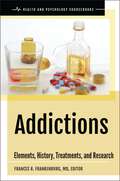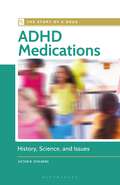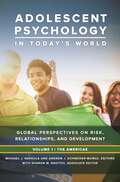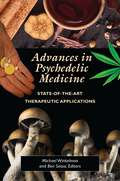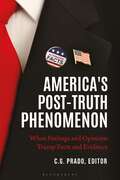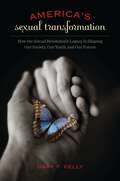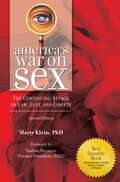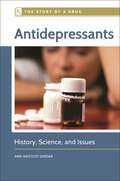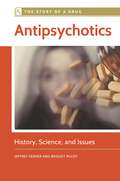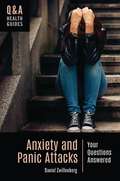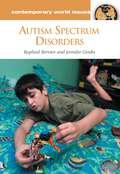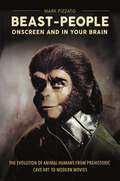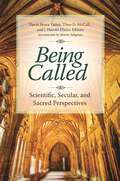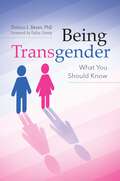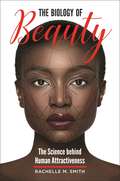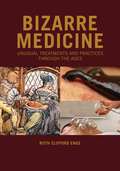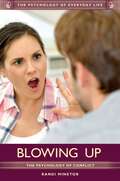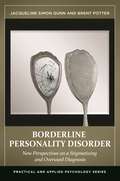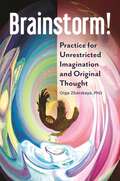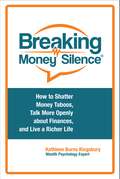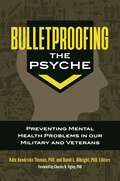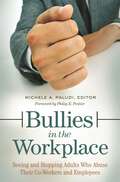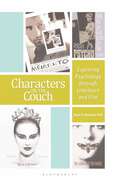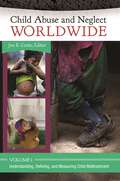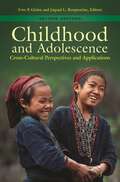- Table View
- List View
Addictions: Elements, History, Treatments, and Research (Health and Psychology Sourcebooks)
by Frances R. FrankenburgThis book offers an accessible and comprehensive yet compact description of various forms of addiction, a disorder suffered by one in every 10 people in the United States.Now thought of as a brain disorder, addiction affects millions of individuals, their families, and society at large. Written by experts who treat people with addiction, this text provides an up-to-date explanation of different addictions with respect to their history, treatments, and related research. Readers will understand the causes, complications, and treatment of addictions after reading this text.Chapters cover the most serious addictions to drugs—alcohol, tobacco, opioids, stimulants, inhalants, and sedative hypnotics—and to highly addictive activity now recognized as a behavioral addiction, gambling. Research into these addictions and treatments for each specific addiction are reviewed. Chapters also consider rapidly changing issues related to addiction, including the increase in deaths due to the opioid epidemic, the evolving legal status of marijuana, and the use of hallucinogens in therapy. In addition to forms of addiction, the text addresses the neurobiology of addiction; brain pathways involved in addiction are just beginning to be understood.
ADHD Medications: History, Science, and Issues (The Story of a Drug)
by Victor B. StolbergThe treatment of attention deficit/hyperactivity disorder (ADHD) is a complex challenge. This book provides comprehensive, scientific coverage of the numerous different types of drugs that are used to treat ADHD, and it examines the historical, sociological, and policy-related factors involved in the use of ADHD medications.A national study indicated that 11 percent of U.S. children and teens were diagnosed with attention deficit/hyperactivity disorder (ADHD) in 2011—a figure 43 percent higher than in 2003. The incidence of ADHD diagnoses among females has also increased significantly. For the millions of Americans of all ages who are diagnosed with ADHD, the proper treatment of this disorder is critically important. ADHD Medications: History, Science, and Issues provides readers with the complete story of ADHD drugs. The book discusses the pharmacological basis of the effects of these powerful drugs; examines the myriad social dimensions of the use, misuse, and abuse of these substances; and identifies the range of issues that affect the recognition, diagnosis, and treatment of ADHD.After an introductory case study of an individual with ADHD and this individual's problems and successes with ADHD medicines, this new book in the Story of a Drug series provides an overview of ADHD and its various symptoms, as well as the causes, prevalence, and diagnosis of ADHD. Various treatment approaches—including information about the many medications used—are discussed in detail, as well as other substances and alternative ways used to treat individuals with ADHD. Readers will also gain an understanding of neurotransmission and the specific mechanism of action of ADHD medications; the effects and applications of these drugs, plus their associated risks, misuse, and abuse; as well as related policy issues, with special focus on the controversial issues regarding ADHD drug scheduling (categorization).
Adolescent Psychology in Today's World [3 volumes]: Global Perspectives on Risk, Relationships, and Development [3 volumes]
by Michael J. Nakkula and Andrew J. Schneider-MuñozThis groundbreaking three-volume set spotlights how conditions around the world are affecting the healthy development of adolescents in their respective environments, on all six continents.Continually unstable or perpetually poor economic conditions, globalization, and rapid technological change are just three of the forces affecting a group 1.2 billion strong today, a demographic poised to become our world leaders and catalysts in the not-too-distant future: the world's adolescents. Led by two editors who have been dedicated to studying adolescent development worldwide for decades, this novel collection of works from contributors in more than 40 countries emphasizes how possibilities for healthy mental and physical development are affected by the difficulties youths face in their countries and how these challenges have shaped, and are shaping, contemporary teenage life today.The set comprehensively addresses issues for adolescents across the globe, such as the day-to-day challenges of poverty, inadequate education, violence or war, disease, reproductive matters, globalization and technological challenges, and more, while also providing a strengths-based focus in the volumes, showing how and why some teenagers in each country have surmounted the challenges and forged stronger characters to better their worlds. These stories document more than personal victories, and their experiences matter to far more than the adolescents themselves. In its State of the World's Children 2011 report, UNICEF noted that the world community needs to turn its attention to adolescents in need, explaining that focusing on this large and potentially powerful group makes economic sense as well as being a necessary step in working towards achieving human justice. By addressing the risks, challenges, and strengths of teenagers as a group in countries worldwide, this work serves to break the cycle of poverty, violence, discrimination, and death for adolescents.
Advances in Psychedelic Medicine: State-of-the-Art Therapeutic Applications
by Michael Winkelman and Ben Sessa, EditorsResearchers, program administrators, and practicing clinicians explain the most recent developments in using psychedelic substances to treat psychological, physiological, and social problems.More than a decade ago, the U.S. government lifted its ban on all testing of psychedelic substances. Winkelman and Sessa now provide updated scientific research and applications of these substances, now moving into approved categories of medicine. The text is an up-to-date assessment of the latest advances in the field of psychedelic medicine, covering the use of LSD, psilocybin, MDMA, ayahuasca, and other substances to augment psychotherapies for a range of disorders. It discusses medical and psychiatric concerns, clinical efficacy and safety, ethical considerations, and neuroscience findings regarding the psychedelic compounds. Topics covered include an overview of psychiatric applications of psychedelics; treatments for addictions and depressive disorders; effects of psychedelics on inflammation and neuroplasticity; evidence for clinical applications of DMT, ayahuasca, and cannabidiol; psychedelic treatment of sociopathic disorders; microdosing psychedelics; training psychedelic therapists; and community-based harm reduction approaches to managing psychedelic crises.
America's Post-Truth Phenomenon: When Feelings and Opinions Trump Facts and Evidence
This book presents absorbing and critical expert perspectives on the post-truth phenomenon that has infiltrated the U.S. political system, media, and populace.Deception in politics is nothing new, but the quantity of unsubstantiated statements in America today is unprecedented. False notions, fake news, "alternative facts," and opinions are being pitched from sources including the White House, Congress, and the American population via Twitter, Facebook, and online news sites as well as print, television, and radio. Such a widespread spectacle instantly captures the attention of people nationwide, but disagreement has the nation almost bordering on civil war over the definition of "the truth" and what this book calls "post-truth."In this text, C.G. Prado and expert contributors present varied perspectives on post-truth, its authoritarian implications for the nation, and how we can approach information to differentiate between truth and post-truth. Speaking to general readers, students, and scholars alike, chapters include text on the historical and social events that initiated and developed post-truth and why some people are more prone than others to accept and perpetuate post-truth. They also discuss post-truth as a threat to democracy.
America's Sexual Transformation: How the Sexual Revolution's Legacy Is Shaping Our Society, Our Youth, and Our Future (Sex, Love, and Psychology)
by Gary F. KellyThis book explains how the short-lived sexual revolution 50 years ago has led to the current evolution of our sexual values and behaviors and social standards among youth culture, examining topics such as communication technologies and sex, teen pregnancy, and divorce rates in the Bible Belt.Is an increase in sexual activity during adolescence a normal part of the transition to adulthood, or evidence of a societal problem? Why would conservative religious youth become sexually active earlier than their peers and be more likely to have an unintended pregnancy or sexually transmitted disease? How are women continuing to lead our society's sexual transformation?Written by an author whose 40-year career in sexology and university administration provides a uniquely qualified perspective upon both sex research and the changing sexual perceptions of American youth, this comprehensive book is must-read for both parents and policy makers. America's Sexual Transformation traces the philosophical, cultural, and scientific developments responsible for the beginning and end of America's sexual revolution that have now spawned a more substantive sexual transformation. It examines traditional theories and attitudes regarding sex, and demonstrates how the findings of sex research provide entirely new paradigms that should replace outmoded and harmful theories. This groundbreaking book also explains who we are as sexual individuals and how we got to be that way.
America's War on Sex: The Continuing Attack on Law, Lust, and Liberty (Sex, Love, and Psychology)
by Marty Klein Ph.D.This book exposes how a coalition of political, religious, and civic leaders are using the issue of sex to frighten, misinform, and bully Americans—paving the way for dramatic new public policies that are already restricting everyone's rights.Americans are more vulnerable today than ever to anxiety about sexual danger, to believing that their sexuality is not "normal" or moral, and to laws and public policies that restrict their rights, criminalize their consenting behavior, and confuse and miseducate their children. In the second edition of America's War on Sex: The Continuing Attack on Law, Lust, and Liberty, psychologist, sex therapist, and courtroom expert witness Marty Klein sets the record straight and uncovers how the "Sexual Disaster Industry" works—a powerful social and political propaganda machine that is supported by the very citizens it victimizes.This book analyzes eight "battlegrounds" in which America's War on Sex is being fought and examines how each one is the focus of an unrelenting struggle to regulate sexuality in direct contradiction to our Constitutional guarantees, scientific fact, and the needs of average Americans. Klein places these various attacks on our rights in historical context, explains how the money and political power are coordinated from the same sources, and shows how the Religious Right inflames Americans' anxiety about sexuality even as it proposes repressive schemes to reduce that anxiety. This book tackles a sensitive and volatile topic head-on, addressing how the political, social, historical, religious, and emotional issues surrounding public policy interfaces with sexuality as no other work has before.
Antidepressants: History, Science, and Issues (The Story of a Drug)
by Ann Westcot JordanThis accessible volume offers a holistic exploration of this diverse class of drugs, from medical, historical, cultural, and economic perspectives.Depression is one of the most commonly reported mental disorders, and it affects millions of Americans. A wide variety of medications are used to treat depression, many of which have become household names—Zoloft, Prozac, and Paxil among them. Because these medications have the ability to alter how people think and feel, however, physicians must weigh a number of factors when prescribing them, especially to teens. Antidepressants: History, Science, and Issues, a part of Greenwood's Story of a Drug series, offers a robust exploration of antidepressant medications that covers the historical, ethical, medical, legal, and scientific dimensions of these drugs.After an introductory case study of a person with depression and this individual's problems and successes with antidepressants, the book provides an overview of depression and its various symptoms as well as the causes, prevalence, and diagnosis of depression. Readers will gain an understanding of the neurotransmission and specific mechanisms behind the activity of antidepressant medications; the effects and applications of these drugs, plus their associated risks of misuse and abuse; and related policy and societal issues.
Antipsychotics: History, Science, and Issues (The Story of a Drug)
by Jeffrey Kerner Bridget McCoy M.D.The problem of serious mental illness is a widely discussed topic in the media and popular culture. This text provides a comprehensive analysis of antipsychotic medications, covering historical, social, and scientific viewpoints on this important and controversial class of medications.Antipsychotics are unique drugs with the ability to alter how people think and communicate. As a result, physicians must weigh a range of implications when prescribing antipsychotics. Antipsychotics: History, Science, and Issues offers a robust explanation of antipsychotic medications that covers the historical, ethical, medical, legal, and scientific dimensions of antipsychotics. The chapters explore topics ranging from the science of how examples of this class of drug actually work in the body to the social and legal implications of antipsychotics, making this subject understandable and relatable for lay readers who are not mental health practitioners. Readers will learn why prescribing antipsychotics is often a difficult decision due to the inherent risks of giving these medications to different types of patients and appreciate how mental health laws impact psychiatrists' prescribing practices.
Anxiety and Panic Attacks: Your Questions Answered (Q&A Health Guides)
by Daniel Zwillenberg PsyDA new title in the Q&A Health Guides series, this book tackles readers' questions regarding anxiety and panic attacks, dispelling misconceptions and examining real-world scenarios that highlight important concepts and controversies.How is social anxiety different from shyness or introversion? Are anxiety disorders only a problem in the Western, industrialized world, and if not, are they expressed differently in other cultures? Why do some people suffer from panic attacks while others do not? What kinds of therapy and medication are available for anxiety? What happens in therapy? How can well-meaning family and friends help a person with an anxiety disorder rather than make things worse? Anxiety and Panic Attacks: Your Questions Answered addresses all of these topics and much more, presenting information in a question-and-answer format that makes finding the desired information easy. The book begins with a "Guide to Health Literacy" section that explains what health literacy is and provides readers with tools to improve their health literacy, and then examines five myths and misconceptions about anxiety and supplies five case studies that provide real-world context and reinforce the concepts discussed in the book. All of the Greenwood Q&A Health Guides series books are specifically designed to provide readers with authoritative yet accessible answers to their questions in a concise, targeted resource that they can trust to be medically accurate.
Autism Spectrum Disorders: A Reference Handbook (Contemporary World Issues)
by Raphael Bernier Ph.D. Jennifer GerdtsThis handbook provides an overview of the current scientific understanding of autism spectrum disorders, as well as a cultural and historical perspective on the controversies that plague the field."Autism" describes a complex developmental disability that interferes with social interaction and communication. Symptoms of autism are generally recognizable when children are under the age of three. Until the 1990s, rates for autism were generally estimated at 1 in 2500. In 2010, however, the estimate is now 1 in 110 children. Is the incidence of autism increasing, or has there simply been a shift in how often this disability is diagnosed as the problem?This text provides a comprehensive explanation of autism spectrum disorders (ASD). Autism Spectrum Disorders: A Reference Handbook educates readers about ASD without relying on confusing medical jargon, highlighting current understanding of etiology, neuroscience, and intervention. It also discusses the historical and cultural influences of ASD and explores the controversial aspects of autism.
Beast-People Onscreen and in Your Brain: The Evolution of Animal-Humans from Prehistoric Cave Art to Modern Movies (Brain, Behavior, and Evolution)
by Mark PizzatoA new take on our bio-cultural evolution explores how the "inner theatre" of the brain and its "animal-human stages" are reflected in and shaped by the mirror of cinema.Vampire, werewolf, and ape-planet films are perennial favorites—perhaps because they speak to something primal in human nature. This intriguing volume examines such films in light of the latest developments in neuroscience, revealing ways in which animal-human monster movies reflect and affect what we naturally imagine in our minds. Examining specific films as well as early cave images, the book discusses how certain creatures on rock walls and movie screens express animal-to-human evolution and the structures of our brains. The book presents a new model of the human brain with its theatrical, cinematic, and animal elements. It also develops a theory of "rasa-catharsis" as the clarifying of emotions within and between spectators of the stage or screen, drawing on Eastern and Western aesthetics as well as current neuroscience. It focuses on the "inner movie theater" of memories, dreams, and reality representations, involving developmental stages, as well as the "hall of mirrors," ape-egos, and body-swapping identifications between human beings. Finally, the book shows how ironic twists onscreen—especially of contradictory emotions—might evoke a reappraisal of feelings, helping spectators to be more attentive to their own impulses. Through this interdisciplinary study, scholars, artists, and general readers will find a fresh way to understand the potential for interactive mindfulness and yet cathartic backfire between human brains—in cinema, in theater, and in daily life.
Being Called: Scientific, Secular, and Sacred Perspectives (Psychology, Religion, and Spirituality)
by Martin SeligmanThis unique book is an essential resource for interdisciplinary research and scholarship on the phenomenon of feeling called to a life path or vocation at the interface of science and religion.According to Gallup polls, more than 40 percent of Americans report having had a profound religious experience or awakening that changed the direction of their life. What are the potential mental, spiritual, and even physical benefits of following the calling to take a particular path in life? This standout book addresses the full range of calling experiences, from the "A-ha!" moments of special insight, to pondering what one is meant to do in life, to intense spiritual experiences like Saint Paul on the road to Damascus.Drawing upon the collective knowledge and insight of expert authors from Australia, China, Eastern Europe, Italy, the UK, and the United States, the work provides a comprehensive examination of the topic of callings suitable for collegiate students, professors, and professional scholars interested in topics at the interface of science and religion. It will also benefit general readers seeking the expertise of psychologists, neuroscientists, and theologians from various backgrounds and worldviews who explain why it is important to "do what you were meant to do."
Being Transgender: What You Should Know
by Dana Jennett Ph.D.Written for general audiences, this unprecedented book comprehensively answers many questions about being transgender with current experiential and scientific information, including the evidence for a biological transgender predisposition.With transgender people visibly achieving fame in entertainment, the literary world, and other arenas, increasing numbers of transgender people are choosing to publicly announce that they are transgender. All of this has brought transgender people and the associated issues of being transgender into mainstream discourse. The demand for fact-based, scientific information on being transgender has never been higher. Written by a transgender person who is also a physiological psychologist, this book is the first for general readers that explains what is known about transgender causation, what life as a transgendered individual is like, and the science involved in living a transgender life.This book serves to improve understanding of being transgender among general audiences—including transgender readers—by describing the science and experience of being transgender. It supplies an enlightening understanding of what if feels like to be transgender, when it starts, the many paths for living a transgender life, and methods to face challenges such as bullying and rejection. It provides a worldview that transgender people are neither broken nor diseased, but rather that they exhibit transgender behavior because of a biological predisposition for which there is solid scientific evidence.
The Biology of Beauty: The Science behind Human Attractiveness
by Rachelle M. SmithThis thought-provoking book examines the science behind human attractiveness—the ratios, proportions, and other factors that to a large extent dictate what we find "beautiful."It's said that "beauty is in the eye of the beholder," but recent scientific research suggests that human attractiveness is much more objective than we once thought, deeply rooted in our biology and evolutionary history. For instance, facial symmetry is considered extremely attractive because it indicates good health and nutrition during the formative developmental years. This book explores these insights.Part I of The Biology of Beauty: The Science behind Human Attractiveness takes a closer look at what traits we find the most alluring and why. It discusses why attractiveness is important from an evolutionary standpoint and the advantages (and disadvantages) of being attractive. In addition to exploring these beauty "universals," it examines how beauty ideals can be shaped by factors such as culture, religion, and the media. Part II provides an in-depth analysis of individual features that contribute to attractiveness, offering scientific explanations for our preferences. The book also includes a collection of insightful sidebars that highlight beauty ideals in different parts of the world and at other times in history.
Bizarre Medicine: Unusual Treatments and Practices through the Ages
by Ruth Clifford EngsThis encyclopedia explores historical and contemporary fringe remedies seen as strange, ridiculous, or even gruesome by modern Western medicine but which nevertheless played an important role in the history of medicine.From placing leeches on the neck to treat a cough to using crocodile dung to prevent pregnancy, a number of medical treatments that now seem unusual were once commonplace. While a few of these remedies may have been effective, most were either useless or actually counterproductive to good health. Even today, there are alternative and fringe treatments considered bizarre by mainstream medicine yet used by hundreds of thousands of people.Bizarre Medicine: Unusual Treatments and Practices through the Ages offers a fascinating look into the history of medicine. Entries are organized by disease or medical condition and explore the folk and traditional "cures" used to treat them. Explanations are provided for why some treatments may have worked and why others may have done more harm than good. In addition, entries provide a clear description of the causes, symptoms, and current treatment options for each condition based on current scientific understanding. Each entry also discusses the condition's enduring impact on society and the arts.
Blowing Up: The Psychology of Conflict (The Psychology of Everyday Life)
by Randi MinetorThis is a powerful resource for anyone who wants to understand the nature of interpersonal conflict—to study it, understand why it's a consistent part of human history, and perhaps avert it in their own lives.Why does conflict surround us in everyday life, from spats between individuals to major conflicts involving large groups? Is conflict inevitable? Why are conflicts and differences of opinion often so hard to resolve? Blowing Up: The Psychology of Conflict focuses on interpersonal conflict and the ways that this level of conflict can move beyond the original relationship to permeate larger constructs—small groups, large groups, whole organizations, and even entire nations. By examining both the positive and negative consequences of conflict—and by documenting its existence as normal and common—readers can appreciate how conflict does not immediately equate to negative feelings and how it also can be useful in creating rules and laws, aiding in negotiation, and bringing people together to work toward a common goal.This clear and accessibly written book in Greenwood's Psychology of Everyday Life series provides students with an understanding of the important role conflict plays in our lives, the many forms conflict may take, and the ways that conflict can actually be constructive and useful as well as destructive to relationships, discussions, and groups. The historical overview of established theories and the study of conflict to date provides readers with invaluable perspective into the subject by identifying and analyzing specific conflicts, including well-publicized conflicts in foreign countries. The book also charts conflict throughout the life cycle to help students identify the reasons for conflicts that occur in their own lives—with parents, friends, siblings, employers, romantic partners, and people in authority.
Borderline Personality Disorder: New Perspectives on a Stigmatizing and Overused Diagnosis (Practical and Applied Psychology)
by Jacqueline Simon Gunn Brent PotterThis book is an ideal resource for general readers who want a clear understanding of people suffering with chaotic emotions, and for clinicians treating patients for Borderline Personality Disorder (BPD).The patterns of behavior of those with borderline personality disorder (BPD) are often frustrating and mystifying to both clinicians and family members, despite several decades of study and research on this form of distress. Borderline Personality Disorder: New Perspectives on a Stigmatizing and Overused Diagnosis presents a thorough critical and historical review of the diagnosis of BPD and explores—through academic and clinical narratives—the different processes that occur in borderline behavior patterns. The authors offer new perspectives that emphasize the whole person rather than a diagnosis, addressing the emotional storms and mood instability of BPD, providing guidance on managing emotional chaos in the therapeutic relationship, and explaining how to use one's own feelings as a clinical tool. Their approach gives an intimate experiential feel for the interpersonal processes that occur in psychotherapy for both the patient and therapist. The result: readers will better understand who the person behind the diagnosis is, and comprehend what it really feels like to be someone struggling with these difficult interpersonal patterns.
Brainstorm!: Practice for Unrestricted Imagination and Original Thought
by Olga Zbarskaya Ph.D.This book explains how to unlock unlimited personal creativity and to create a culture that supports emotional health, inventiveness, and success through a comprehensive examination of creative thinking that integrates theoretical, scientific, psychological, and sociological perspectives.How do we teach innovative thinking and stimulate creativity? Creative thinking is a highly desirable trait in today's world, where creativity lends the mental fitness and flexibility necessary to switch easily between patterns of thinking and contend with the constant changes that result from ongoing technological advancements. Yet research shows that the national level of creativity in both children and adults is declining. This book showcases methods that build "outside of the box" thinking skills that can empower people to succeed not only in school or work but in life in general, resulting in greater self-esteem, reduced stress, increased productivity, improved overall health, and more satisfaction in everyday life. Brainstorm! Practice for Unrestricted Imagination and Original Thought shows, with scientific proof, that the powerful engine of creativity has unlimited fuel and can power every sphere of life, from food preparation to personal relationships and from academia to government administration. It is a manual for leveraging creative thought in order to overcome barriers, solve difficult problems, and streamline and optimize day-to-day living. Educators, institutional leaders, and CEOs will discover how creativity-boosting courses and trainings can promote unprecedented performance and productivity among students and employees. Based on extensive research data and more than 100 interviews with experts worldwide, this accessible and engaging book presents vivid analogies and metaphors; insights from experts in various fields ranging from education to neurology, music, and technology; and fun exercises that make it clear that creativity is indispensable in every realm of life—and that anyone can take simple, effective steps to tap into their own creative potential.
Breaking Money Silence®: How to Shatter Money Taboos, Talk More Openly about Finances, and Live a Richer Life
by Kathleen Burns KingsburyAnyone concerned about finances—and that's just about everyone—will welcome this step-by-step guide to opening up about a difficult subject. It offers a strategy that can save money, improve relationships, and help people raise fiscally responsible children.Almost half of Americans say that the most difficult topic to discuss with loved ones is their personal finances, so much so that they would rather talk about death, politics, or religion. But what price do you pay for staying quiet? In her fifth book, Kathleen Burns Kingsbury, a wealth psychology expert with over twenty-five years of experience empowering women, couples, parents, families, and wealth advisors, provides you with the answer. This book equips you with the practical tools needed to navigate difficult conversations and future-proof your finances. Discover how to identify your thoughts and beliefs about wealth, and how doing so can help you talk more openly and honestly about money with loved ones. Acquire skills for engaging in effective dialogues with aging parents about healthcare costs, estate planning, and end-of-life issues. Learn tips for fighting fair financially with your partner, and for raising a financially literate next generation. Using Money Talk Challenges and real-life stories, Kingsbury coaches you (and your trusted advisor) to take action. You'll walk away with a roadmap for putting what you learn into practice. Breaking Money Silence is a catalyst for a money revolution leading to a more gender-savvy, financially secure, and financially literate world.
Bulletproofing the Psyche: Preventing Mental Health Problems in Our Military and Veterans
This book presents the latest in neuroscience and resiliency research alongside the personal stories of military veterans to advocate for an empirically validated training protocol.In Bulletproofing the Psyche: Preventing Mental Health Problems in Our Military and Veterans editors Kate Hendricks Thomas and David L. Albright lead an interdisciplinary team of researchers, practitioners, and military veterans in calling for a new kind of training with a focus on "bulletproofing the psyche": psychological resiliency skills training. They combine research and storytelling to argue that somatic protocols, a training method long used in the treatment sector to rewire the brain after trauma and a proven, valid alternative to drug and talk therapy, should be applied to the prevention and training sectors. Contributors include leaders in the fields of trauma research, military social work, and veterans' health.Students and scholars in the fields of social work, military psychology, social psychology, health promotion, organizational development, and institutional organization will find the research relevant, while clinicians, counselors, and mental health care providers working with military-connected communities may find the discussion of trauma treatment and intervention model transformative for their practice.
Bullies in the Workplace: Seeing and Stopping Adults Who Abuse Their Co-Workers and Employees (Women's Psychology)
by Michele A. PaludiA team of interdisciplinary experts provides an up-to-date review of current theories, empirical research, and management strategies that will help organizations address workplace bullying through both prevention and intervention.Workplace bullying is a serious issue that can lead to anxiety, depression, substance abuse, absenteeism, sleep disturbances, and post-traumatic stress syndrome. This book has a simple goal: to help employers see bullying—and stop it. It does that by providing organizations with best practices, management strategies for bullying prevention, and protocols for investigating bullying complaints.Part I of the book overviews workplace bullying, discussing incidence, psychological dimensions, and explanatory models. It looks at reasons bullies do what they do, at the difference between a tough boss and a bully, and at the cost of bullying for organizations. Equally important are the book's insights into the impact of bullying on employees. Everyday problems of employees targeted by bullies at work are illustrated, including the resulting psychological distress that can lead to suicide. Part II of the work focuses on prevention and coping and on legislation that protects employees, including Title VII of the 1964 Civil Rights Act. Finally, to help both employers and employees, the book offers sample anti-bully policies and bully awareness training programs, and also lists organizations concerned with workplace bullying.
Characters on the Couch: Exploring Psychology through Literature and Film
by Dean HaycockProviding intriguing insights for students, film buffs, and readers of various genres of fiction, this fascinating book delves into the psychology of 100 well-known fictional characters.Our favorite fictional characters from books and movies often display an impressive and wide range of psychological attributes, both positive and negative. We admire their resilience, courage, humanity, or justice, and we are intrigued by other characters who show signs of personality disorders and mental illness—psychopathy, narcissism, antisocial personality, paranoia, bipolar disorder, and schizophrenia, among many other conditions. This book examines the psychological attributes and motivations of 100 fascinating characters that include examples of both accurate and misleading depictions of psychological traits and conditions, enabling readers to distinguish realistic from inaccurate depictions of human behavior.An introductory section provides a background of the interplay between psychology and fiction and is followed by psychological profiles of 100 fictional characters from classic and popular literature, film, and television. Each profile summarizes the plot, describes the character's dominant psychological traits or mental conditions, and analyzes the accuracy of such depictions. Additional material includes author profiles, a glossary of psychological and literary terms, a list of sources, and recommended readings.
Child Abuse and Neglect Worldwide [3 volumes]: [3 volumes]
by Jon R. ConteIn this comprehensive three-volume set, experts from around the globe provide an understanding of child abuse knowledge and healing, detailing current therapeutic practices and policy issues.This riveting three-volume set examines classic, current, and emerging research on child neglect and abuse in countries all over the world, covering regions that include Africa, Asia, the Arab world, Latin America, Europe, and our own backyards and bedrooms in North America. The entries put maltreatment of children in the global spotlight and explain the prevalence, incidence, and risk factors for children in each setting, addressing the laws, social and cultural perceptions, and differences regarding child abuse and neglect worldwide. The chapters provide a glimpse into the historical and cultural context of abuse in regions of the world and identify the most ineffective as well as the most protective or promising responses to child maltreatment worldwide. Professionals from entry level to expert will find materials that will expand their understanding and practice with, and on behalf of, abused children and the adults in their lives.
Childhood and Adolescence: Cross-Cultural Perspectives and Applications
by Uwe P. Gielen Jaipaul L. RoopnarineThis comprehensive reference analyzes psychological and anthropological studies concerning child and adolescent development across cultures, digging into often-forgotten topics like street children, child soldiers, and parenting in war-torn countries.Traditionally, research on child and adolescent development has focused on American youth, inadvertently neglecting 96 percent of the world's children. This all-encompassing volume introduces global perspectives on young people across the globe, focusing on such topics as parenting and childcare, gender roles, violence against girls, adolescence in poor and rich countries, and developmental psychopathology across cultures. Recently updated, the second edition includes the latest findings in the field, additional content, and new photos and charts.With contributions from leading psychological and anthropological scholars, chapters address worldwide changes in children's lives, parent-child relationships, sibling relationships, immigrant children and their families, and adolescents in both industrialized and developing nations. A special section discusses children living in difficult circumstances, including street children, child soldiers, global nomads, and children suffering from various internalizing and externalizing disorders. This book is the perfect introduction to the latest trends in developmental psychology.
